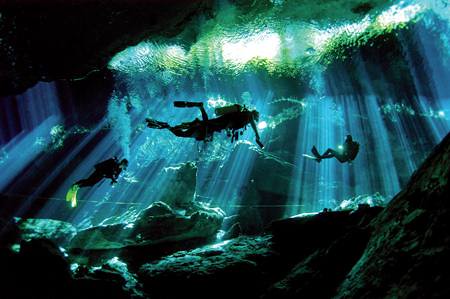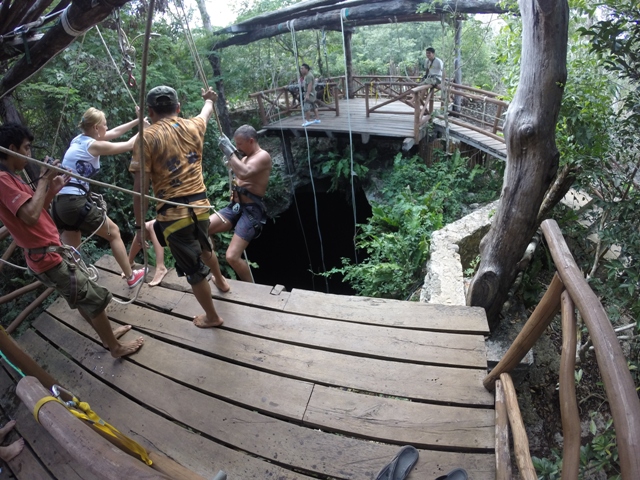
“The cenote is a must-see in Mexico,” said my colleague before my first trip to Mexico. At that time I had no idea what a cenote was, but hearing it is a beautiful cave with water that shines blue-green in the light, I was sold. One of the first things I did after arriving in Mexico was to book an excursion to the Cenote Maya.
On this excursion, our group’s tour guide Olga explained how cenotes formed and how more than 6000 cenotes exist on the Yucatán Peninsula. According to Olga, the reef was left “full of holes like Swiss-cheese” after an ice age 65 million years ago. When the ceiling of these cavities collapsed, it exposed caverns and lakes which we call cenotes. To the Mayan people, the cenote is a valuable source of water and a sacred area to communicate with spirits – a world distinct from the sky and Earth above-ground.
The Cenote Maya is located in a present Mayan village (or rather, villages established around cenotes). We greeted the villagers with our beginner Mayan vocabulary “Malukin” (Good morning) and “Yumbootik” (Thank you), and we received a blessing from a Mayan shaman before we rappelled down into the Cenote Maya for a swim.

The entrance to the Cenote Maya was a hole in the ground just a few meters in diameter. We stood at the edge of this hole on a couple rustic wooden floorboards, peeking into a dark abyss under our feet. We hooked our harnesses onto a single rope, and we trusted our guides and our equipment to slowly descend into a huge underground cave world.

These cenotes can be incredibly large. We rappelled down 75 ft (23m; around the height of a 5-story building), along the walls lined with a complex structure of stalagmites and stalactites. At the end of the rope, I splashed into the water, seeing only darkness under my feet. The icy cold water and the indiscernible depth of the sinkhole gave me the shivers, but I was quickly captivated by the view. I stared up in awe at the ceiling now so far up above, and the distance would play tricks on my eyes.
The most incredible part to me was that the trees trailed down much longer than the rope we used to rappel down: the stems and roots were reaching 75 ft through the cenote for water to send all the way back up to their leaves. The trees in the jungle seemed short and stubby, but they extended much longer underground.
After exploring the perimeters of the cenote, I swam back towards where our ropes led us in. I found the sunlight shining down and revealing some fish swimming under the surface of the water. When sunlight enters the cenote, it appears to penetrate through the water to the bottom of the cenote and reflect out again – the ancient Mayan culture interpreted this as representative of rebirth.
A few weeks after my trip, a friend was on his way to Mexico. “A cenote is a must-see!” I echoed my colleague who introduced me to that beautiful, mystical world.

I’m so pleased you took your colleague’s advice 😉
What a great article; I want to go there right now. Thank you for sharing your wonderful experience.
Dear Elana, Thank you for your comment! I stayed in Riviera Maya to see this cenote. I was able to visit the nearby ancient Mayan ruins Ek Balam on the same day, so I had a full day of a unique and cultural experience. I hope you think of this place when you make your next travel plans!